Daniel Bessner at Harper’s Magazine:
 In 2012, at the age of thirty-two, the writer Alena Smith went West to Hollywood, like many before her. She arrived to a small apartment in Silver Lake, one block from the Vista Theatre—a single-screen Spanish Colonial Revival building that had opened in 1923, four years before the advent of sound in film.
In 2012, at the age of thirty-two, the writer Alena Smith went West to Hollywood, like many before her. She arrived to a small apartment in Silver Lake, one block from the Vista Theatre—a single-screen Spanish Colonial Revival building that had opened in 1923, four years before the advent of sound in film.
Smith was looking for a job in television. She had an MFA from the Yale School of Drama, and had lived and worked as a playwright in New York City for years—two of her productions garnered positive reviews in the Times. But playwriting had begun to feel like a vanity project: to pay rent, she’d worked as a nanny, a transcriptionist, an administrative assistant, and more. There seemed to be no viable financial future in theater, nor in academia, the other world where she supposed she could make inroads.
For several years, her friends and colleagues had been absconding for Los Angeles, and were finding success. This was the second decade of prestige television: the era of Mad Men, Breaking Bad, Homeland, Girls.
more here.

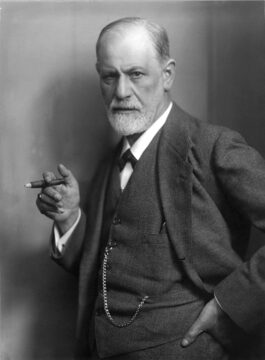 The first time Sigmund Freud wrote of destroying his papers he was twenty-one years old. He was writing to Eduard Silberstein, an intimate friend of his youth and the sole other member of the Academia Castellana, a make-believe Spanish literary society anchored in Cervantes trivia, which served them as a secret forum for airing playful fantasies and precocious world-weariness. Freud invited Silberstein to help expunge the record of their relations by conjuring up a pleasant winter evening in which they could come together to burn their archives “in a solemn auto-da-fé”. The next occasion was eight years later, in a letter to his then fiancée Martha Bernays, during what he described as a “bad, barren month”, waiting for money from a chemist to finance further research into cocaine, doing almost nothing except browsing through Russian history and toying with two rabbits who continually nibbled turnips and messed up his floor. His only real accomplishment, he told Martha then, was to have nearly completed his intention of doing something that would dismay various unborn, unfortunate people – namely his future biographers. He’d destroyed all his notes from the past fourteen years, along with correspondence and the original manuscripts of his scientific papers. In 1907, he once again burned a huge trove of private documents. Finally, in 1938, just before escaping Nazified Vienna, he delegated to his daughter Anna the task of overseeing another bonfire of his letters, which she undertook together with his disciple Marie Bonaparte.
The first time Sigmund Freud wrote of destroying his papers he was twenty-one years old. He was writing to Eduard Silberstein, an intimate friend of his youth and the sole other member of the Academia Castellana, a make-believe Spanish literary society anchored in Cervantes trivia, which served them as a secret forum for airing playful fantasies and precocious world-weariness. Freud invited Silberstein to help expunge the record of their relations by conjuring up a pleasant winter evening in which they could come together to burn their archives “in a solemn auto-da-fé”. The next occasion was eight years later, in a letter to his then fiancée Martha Bernays, during what he described as a “bad, barren month”, waiting for money from a chemist to finance further research into cocaine, doing almost nothing except browsing through Russian history and toying with two rabbits who continually nibbled turnips and messed up his floor. His only real accomplishment, he told Martha then, was to have nearly completed his intention of doing something that would dismay various unborn, unfortunate people – namely his future biographers. He’d destroyed all his notes from the past fourteen years, along with correspondence and the original manuscripts of his scientific papers. In 1907, he once again burned a huge trove of private documents. Finally, in 1938, just before escaping Nazified Vienna, he delegated to his daughter Anna the task of overseeing another bonfire of his letters, which she undertook together with his disciple Marie Bonaparte. When my daughter was born last year, I was fifty-three years old. I’d wanted a child so badly for so long, and her arrival may well be the most wonderful thing ever to happen to me. And yet I cannot picture her first breath, though I witnessed it from inches away. I also cannot picture her right now, as I type these words. Or my wife. Or my parents. Or my friends. Or my daughter’s nursery at home. Indeed, I have no real idea what the verb “to picture” is supposed to mean.
When my daughter was born last year, I was fifty-three years old. I’d wanted a child so badly for so long, and her arrival may well be the most wonderful thing ever to happen to me. And yet I cannot picture her first breath, though I witnessed it from inches away. I also cannot picture her right now, as I type these words. Or my wife. Or my parents. Or my friends. Or my daughter’s nursery at home. Indeed, I have no real idea what the verb “to picture” is supposed to mean.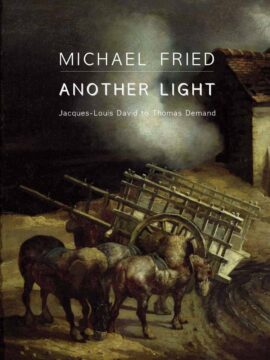 Put slightly differently, my point in appending a reading of “Le Colonel Chabert” to my account of Géricault was to suggest that what we find in the painter’s career is ultimately the defeat of drama and expression in the Diderotian/Davidian sense of both, which is also to say, in the terms developed in my essay, at least a partial loss of world as representable by painting. Nor does French painting following Géricault’s death undo that defeat and that loss. As I remark in “Géricault’s Romanticism,” the two major figures that dominate the scene in the second half of the 1820s and 1830s, Ingres and Delacroix, found ways of bypassing or disabling the issue of theatricality by shifting the imaginative center of their art altogether elsewhere, toward what I think of as a “stylistic” or, better, “esthetic” register (GR, 58–60). By so doing both artists secured long and productive careers, ones, however, that from my point of view remained somewhat askew to the dominant thrust or dialectic of the central current of French nineteenth-century painting.
Put slightly differently, my point in appending a reading of “Le Colonel Chabert” to my account of Géricault was to suggest that what we find in the painter’s career is ultimately the defeat of drama and expression in the Diderotian/Davidian sense of both, which is also to say, in the terms developed in my essay, at least a partial loss of world as representable by painting. Nor does French painting following Géricault’s death undo that defeat and that loss. As I remark in “Géricault’s Romanticism,” the two major figures that dominate the scene in the second half of the 1820s and 1830s, Ingres and Delacroix, found ways of bypassing or disabling the issue of theatricality by shifting the imaginative center of their art altogether elsewhere, toward what I think of as a “stylistic” or, better, “esthetic” register (GR, 58–60). By so doing both artists secured long and productive careers, ones, however, that from my point of view remained somewhat askew to the dominant thrust or dialectic of the central current of French nineteenth-century painting. The contemporary world of botany that Schlanger explores in “The Light Eaters” is still divided over the matter of how plants sense the world and whether they can be said to communicate. But, in the past twenty years, the idea that plants communicate has gained broader acceptance. Research in recent decades has shown garden-variety lima beans protecting themselves by synthesizing and releasing chemicals to summon the predators of the insects that eat them; lab-grown pea shoots navigating mazes and responding to the sound of running water; and a chameleonic vine in the jungles of Chile mimicking the shape and color of nearby plants by a mechanism that’s not yet understood.
The contemporary world of botany that Schlanger explores in “The Light Eaters” is still divided over the matter of how plants sense the world and whether they can be said to communicate. But, in the past twenty years, the idea that plants communicate has gained broader acceptance. Research in recent decades has shown garden-variety lima beans protecting themselves by synthesizing and releasing chemicals to summon the predators of the insects that eat them; lab-grown pea shoots navigating mazes and responding to the sound of running water; and a chameleonic vine in the jungles of Chile mimicking the shape and color of nearby plants by a mechanism that’s not yet understood.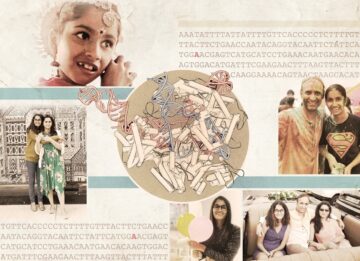 When researcher Arkasubhra Ghosh finally met Uditi Saraf, he hoped that there was still a chance to save her. Ghosh and his collaborators were racing to design a one-off treatment that would edit the DNA in the 20-year-old woman’s brain cells and get them to stop producing toxic proteins. It was an approach that had never been tried before, with a long list of reasons for why it might not work. But the team was making swift progress. The researchers were maybe six months away from being ready to give Uditi the therapy, Ghosh told her parents over breakfast at their home outside New Delhi last June. Even so, Uditi’s mother was not satisfied. Work faster, she urged him.
When researcher Arkasubhra Ghosh finally met Uditi Saraf, he hoped that there was still a chance to save her. Ghosh and his collaborators were racing to design a one-off treatment that would edit the DNA in the 20-year-old woman’s brain cells and get them to stop producing toxic proteins. It was an approach that had never been tried before, with a long list of reasons for why it might not work. But the team was making swift progress. The researchers were maybe six months away from being ready to give Uditi the therapy, Ghosh told her parents over breakfast at their home outside New Delhi last June. Even so, Uditi’s mother was not satisfied. Work faster, she urged him. Pale Fire is one of the greatest books I’ve ever read. It is so great it is terrifying to write about. This is not something I would normally confess, but in this case it seems better to just come out and say it, lest the reader feel the awful stammering of suppressed terror quavering through my words without knowing what they are feeling. It is terrifying! But I want to do it anyway, because although mighty brains from all over the planet have weighed in on the subject with breath-taking and exhaustive scholarly ardour, I feel that something essential about the book remains not exactly unseen but distinctly understated.
Pale Fire is one of the greatest books I’ve ever read. It is so great it is terrifying to write about. This is not something I would normally confess, but in this case it seems better to just come out and say it, lest the reader feel the awful stammering of suppressed terror quavering through my words without knowing what they are feeling. It is terrifying! But I want to do it anyway, because although mighty brains from all over the planet have weighed in on the subject with breath-taking and exhaustive scholarly ardour, I feel that something essential about the book remains not exactly unseen but distinctly understated. Earthquake professionals have made major strides in forecasting the long-term average rate of earthquakes in any given region. Unlike predictions, which involve meaningfully useful bounds in time, space, and magnitude, forecasts are made in terms of probabilities that an earthquake of a certain size will strike on decadal or longer timescales. For example, in 2008, seismologists predicted that there is an estimated 99.7% chance that at least one magnitude 6.7 or greater earthquake will occur in California over the next 30 years. Based on long-term odds, seismologists are known to tell the public that “it’s not a question of if, it’s a question of when” a damaging earthquake will strike.
Earthquake professionals have made major strides in forecasting the long-term average rate of earthquakes in any given region. Unlike predictions, which involve meaningfully useful bounds in time, space, and magnitude, forecasts are made in terms of probabilities that an earthquake of a certain size will strike on decadal or longer timescales. For example, in 2008, seismologists predicted that there is an estimated 99.7% chance that at least one magnitude 6.7 or greater earthquake will occur in California over the next 30 years. Based on long-term odds, seismologists are known to tell the public that “it’s not a question of if, it’s a question of when” a damaging earthquake will strike.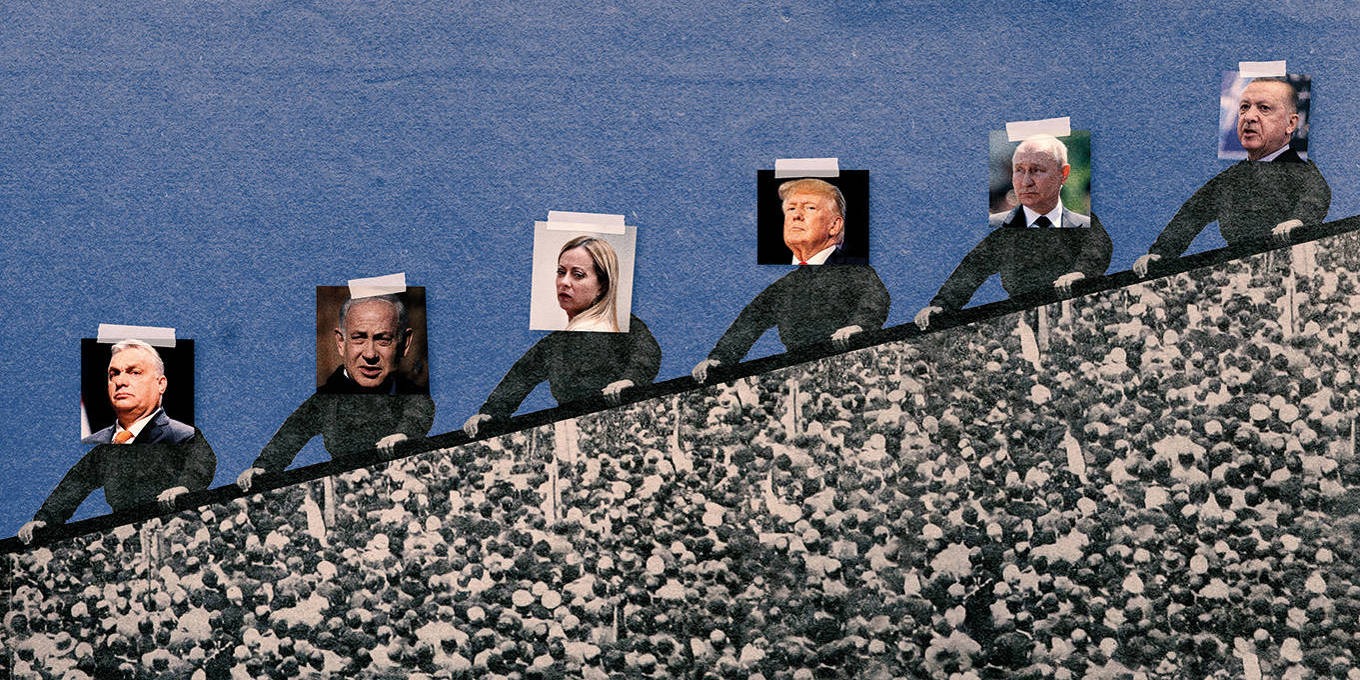 Over the past decade, Ruth Ben-Ghiat has emerged as one of the English-speaking world’s leading experts on, and chroniclers of, authoritarian leaders in the twenty-first century. A professor of history and Italian studies at New York University and the author of
Over the past decade, Ruth Ben-Ghiat has emerged as one of the English-speaking world’s leading experts on, and chroniclers of, authoritarian leaders in the twenty-first century. A professor of history and Italian studies at New York University and the author of  Y
Y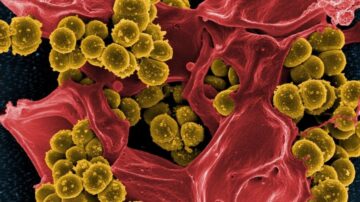 Humans and bacteria are in a perpetual war.
Humans and bacteria are in a perpetual war.